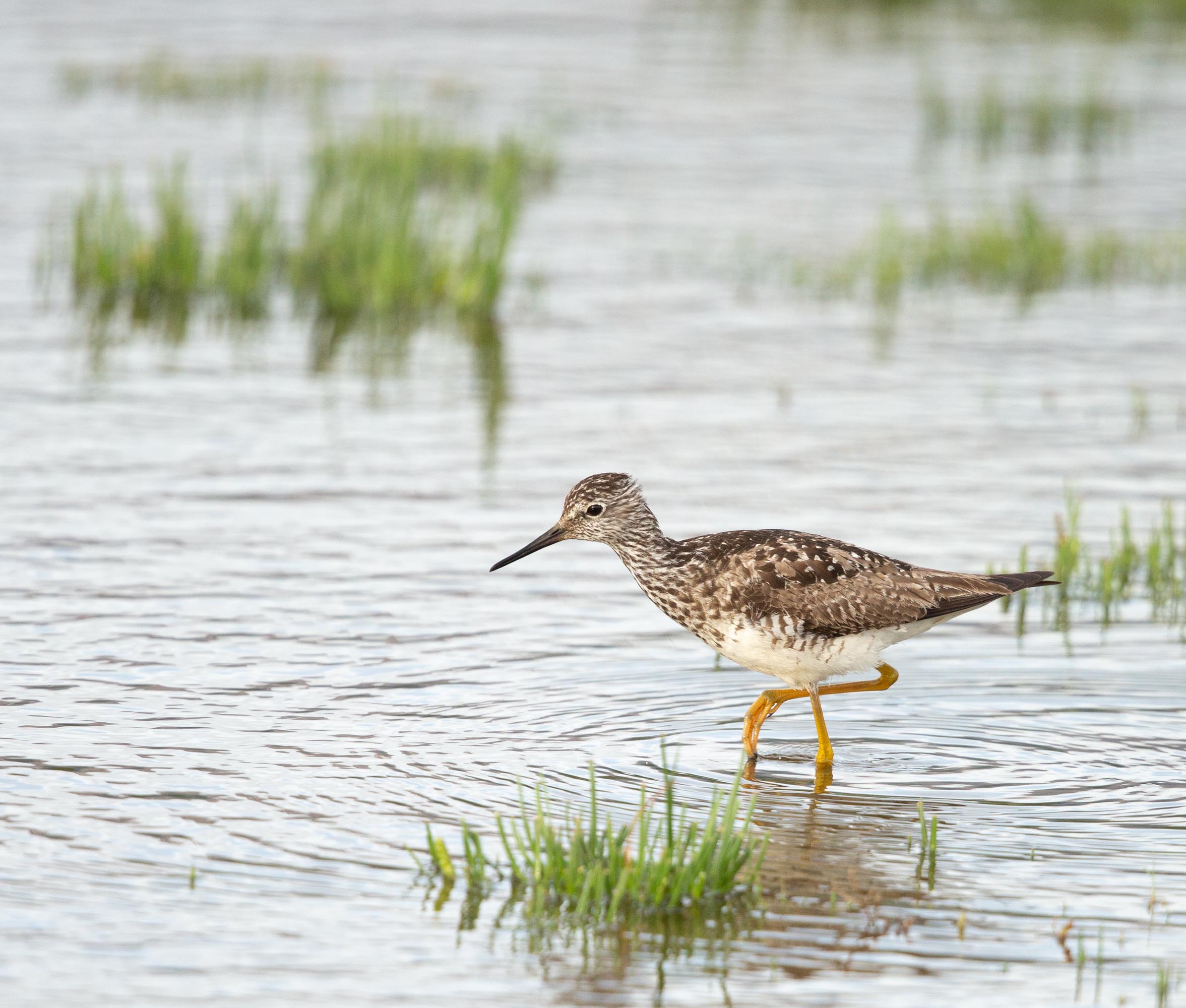Yukon Delta National Wildlife Refuge
This vast, flat wetland and tundra landscape protects a wide variety of birds, mammals, and fish in Southwest Alaska.
Alaska's two largest rivers, the Yukon and the Kuskokwim, form the heart of the 19.2 million-acre Yukon Delta National Wildlife Refuge. Almost 70 percent of the refuge is below 100 feet in elevation. The preserve encompasses a broad, flat delta made up of rivers, streams, lakes, and ponds.
Nelson and Nunivak Islands, off the western coast, are also part of the refuge. The million-plus acre Nunivak Island lies 20 miles off the coast, with several peaks from 1,000 to 1,600 feet. Coastal bluffs range from 100 to 450 feet high, while inland are active sand dunes over 100 feet tall. The second largest island is Nelson Island, which is separated from the mainland by the Ninglick River to the north, Baird Inlet to the northeast, and the Kolavinarak River to the east.
THINGS TO DO
Unlike other remote refuges in Alaska, the Yukon-Kuskokwim Delta is among the most populated rural areas in Alaska. Within the refuge are Alaska Native 35 villages where about 25,000 Yup'ik people make their home. This population gives the region a rich culture based on a subsistence lifestyle. Subsistence fishing far exceeds sportfishing use throughout the refuge. The rivers offer excellent fishing for humpy, silver, and king salmon along with whitefish, sheefish, burbot, northern pike, grayling, and Dolly Varden. The main activities for visitors in the refuge are fishing, wildlife viewing, photography, kayaking, rafting, and hunting.
WILDLIFE
The delta is abundant with wildlife and hosts one of the largest congregations of water birds in the world. A spectacle takes place every spring as millions of ducks, geese, and other water birds return to the refuge to nest. The refuge's most productive wildlife habitat is the coastal region bordering the Bering Sea. This narrow strip of land is the most productive goose nesting habitat in Alaska. Hundreds of miles of rivers and streams also provide spawning and rearing habitat for 44 species of fish. Brown and black bears, caribou, moose, wolves, and musk oxen inhabit the drier uplands.
LANDSCAPE
Vegetation in the refuge is primarily subarctic tundra and includes a variety of scrub, peatland, heath meadow, marsh, and bog habitats. Tall scrub and forest habitats are found in the eastern interior areas. Alpine tundra occurs in the mountainous areas at higher elevations. Less than five percent of the refuge is forested. Narrow bands of riparian, black spruce, and balsam poplar woodlands extend onto the delta along the Yukon and Kuskokwim Rivers and their tributaries.
HISTORY
The area has been home to Alaska Native peoples for thousands of years. Refuge lands were first set aside by President Theodore Roosevelt in 1909 as a preserve and breeding ground for birds. Additional lands were added in 1930, 1937, and 1961. When President Jimmy Carter signed the Alaska National Interest Lands Conservation Act in 1980, several refuges in the area were combined to create the Yukon Delta National Wildlife Refuge.
FACILITIES AND CAMPING
There are no maintained roads, trails, public use cabins, or other visitor facilities within the refuge. Backcountry camping is permitted. The refuge headquarters in Bethel houses a Visitor Center with exhibits on the wildlife, ecosystem, and Yup’ik history of the preserve.
GETTING HERE
Bethel is the gateway city with scheduled air service from Anchorage. From Bethel, most visitors travel into the refuge by charter air service.
For more information, visit the Yukon Delta National Wildlife Refuge website.

Local Climate & Weather
For Alaska's day-to-day weather, it’s best to plan for a bit of everything. Learn more about weather in this area.
Travel Inspiration
#TravelAlaska
#TravelAlaska
 @nikster.d
@nikster.d

